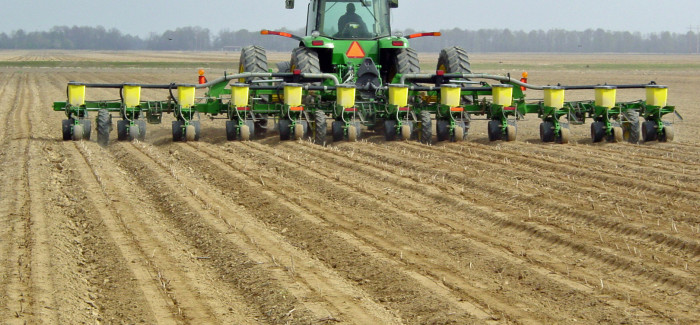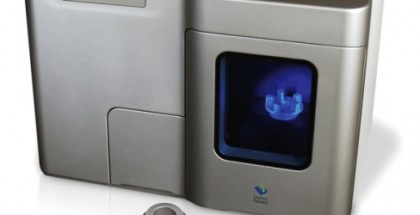Variable-Depth Planting Controller Coming
New agricultural sensor technology may lead to more even crop emergence.
John Fulton, an Ohio State University agricultural engineer, is developing an algorithm that would automatically control precision planter depth adjustments based on real-time soil moisture as well as texture.
“I want to ensure that a farmer can consistently meet the target population and depth regardless of field conditions,” Fulton says.
Normally, operators manually adjust the planter setup for changing soil moisture and texture. Downpressure options for seed depth control have been offered for about three years by John Deere, Precision Planting, and Dawn Equipment. The systems ensure that row units – specifically gauge wheels – maintain uniform soil contact.
However, Fulton’s control algorithm will require a soil-moisture sensor and an onboard soil-texture map. Together, the sensor and map will provide the feedback required for controlling the precision planting technology.
As a default, the planter may be set up to place corn at a 2-inch depth for a specific soil condition. “Then, as in-field conditions vary, the technology will automatically adjust to maintain the target depth,” says Fulton. “As it improves, we see this system placing seed at a depth where soil moisture is present for quicker emergence. Uniform emergence is our goal, allowing full benefit of new precision seeding technologies.”
Soil texture mapping already is available, using electrical conductivity meters, from companies like Veris Technologies in Salina, Kansas, and two Ontario, Canada, companies, Geonics Ltd. in Mississauga and Dualem Inc. in Milton.
For some areas, existing high-quality soil maps could be imported into the variable-depth mapping software and serve a similar purpose.
Prototype Received
Developing an online, wireless soil moisture sensor has been a stumbling block. However, Fulton received a prototype for a wireless moisture sensor in 2013. It is being developed by Viacheslav Adamchuk and colleagues at Canada’s McGill University in Quebec.
Adamchuk is a specialist in designing ag sensors. Some of his early prototypes were used in 2002 to improve the quality of soil compaction maps.
In a project sponsored by John Deere in 2012, Adamchuk’s graduate student, Frederic Rene-Laforest, developed a closed-loop control mechanism for placing seed at different depths in response to changing soil moisture.
A specially designed soil moisture probe, accurate to within about 3% of actual moisture, was installed in front of a planter. It collected soil moisture measurements 2 inches below the soil surface. Linear actuators responded in real-time, varying the planting depth from 1 to 3 inches.
In wet soils, the control mechanism automatically placed corn seed closer to the surface for faster emergence. Relatively dry soil called for deeper planting, to reduce the potential for a moisture deficit soon after emergence.
“If we played with depth, such as shallow seed placement in wet conditions, we saw that some areas gained 16 bushels per acre,” Adamchuk says.
In 2013, his team conducted a strip trial with three planting depths. Preliminary results were promising. Adamchuk and colleagues are continuing the development project.
Similarly, Fulton says the prototype moisture sensor worked well in 2014 as part of his efforts to develop a control algorithm for planters.
“It will take a few years to work out and determine the value to farmers for this new technology,” Fulton says.
(Source – http://www.agriculture.com/crops/tech-tour/variabledepth-plting-controller-coming_196-ar52031)













Submit a Comment